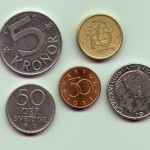Copper swung between gains and losses on Tuesday as investors weighed expectations for upbeat housing data from the U.S. against speculations for an earlier-than-projected deceleration of Feds quantitative easing program. A weaker dollar provided support.
On the Comex division of the New York Mercantile Exchange, copper futures for settlement in March traded at $3.232 per pound at 9:35 GMT, up 0.05% on the day. Prices shifted in a narrow range between days low of $3.220 and session high at $3.239 a pound. The industrial metal jumped to a two-week high during Asian trading on Monday and settled the day higher, extending its weekly advance to 0.4% on Tuesday.
Copper traded sideways on expectations that upbeat housing and consumer sentiment data due to be released this week will boost the industrial metals demand prospects, while also reinforcing the case for an earlier-than-projected Fed stimulus tapering.
Last week’s FOMC October meeting protocols revealed the Federal Reserve might begin trimming its quantitative easing program “in the coming months”, if the economic recovery moves in the desired direction. Fed minutes showed that policy makers “generally expected that the data would prove consistent with the committee’s outlook for ongoing improvement in labor market conditions and would thus warrant trimming the pace of purchases in coming months.”
Speculations for an earlier-than-projected quantitative easing deceleration were reinforced as U.S. retail sales jumped by the most since July last month while the Department of Labor reported on Thursday that the number of people who filed for unemployment assistance in the week ended November 16 decreased by 21 000 to reach 323 000, the lowest number since September.
Xu Liping, a Shanghai-based analyst at HNA Topwin Futures Co, said for Bloomberg: “The Fed’s possible tapering has been seen as the biggest pressure on metals.”
A weaker dollar provided the market with some support. The U.S. dollar index, which measures how the greenback performs against a basket of six major peers, traded at 80.73 at 9:34 GMT, down 0.28% on the day. The December contract fell to a one-week low of 80.66 earlier in the session, while days high stood at 80.96. Weakening of the greenback makes dollar-denominated commodities cheaper for foreign currency holders and boosts their appeal as an alternative investment.
U.S. housing data
On Monday, the National Association of Realtors reported that the number of contracts to buy previously owned homes in the U.S. unexpectedly fell in October for a fifth consecutive month, reducing the demand outlook for the metal used as a conductor and building material. Pending home sales fell by 0.6%, defying projections for a 1.3% jump following Septembers 4.6% contraction, which was the weakest level in six months.
The decline was based on higher mortgage rates and increasing prices due to tighter supply, which drove some prospective buyers away from the real estate market. The association reported that purchases fell by 2.2% from a year earlier on an unadjusted basis.
Patrick Newport, an economist at IHS Global Insight in Lexington, Massachusetts, commented for Bloomberg: “When mortgage rates went up, people got spooked and rushed into the market to seal deals. The numbers that we’re seeing for pending home sales are payback for the stronger numbers earlier this year.”
Data released on Tuesday may show that the number of building permits issued in September and October also advanced, followed by two consecutive gains in housing starts in the respective months. Housing prices are projected to have jumped in September with the S&P/Case-Shiller Composite-20 Home Price Index surging by 12.97% on annual basis, up from 12.82% a month earlier. Meanwhile, the Conference Board will likely report that consumer confidence rose to 72.1 in November following a steep drop to 71.2 in October.
On Wednesday, data by the Labor Department is expected to show that the number of people who filed for initial unemployment benefits rose to 330 000 in the week ended November 23, while durable goods orders probably fell by 1.7% in October. Business activity in Chicago likely slowed in November but remained firmly in the expansion zone, while the Thomson Reuters/University of Michigan Consumer Sentiment Index is projected to confirm the Conference Board’s improvement prediction, marking a surge to 73.1 from October’s 72.0.





